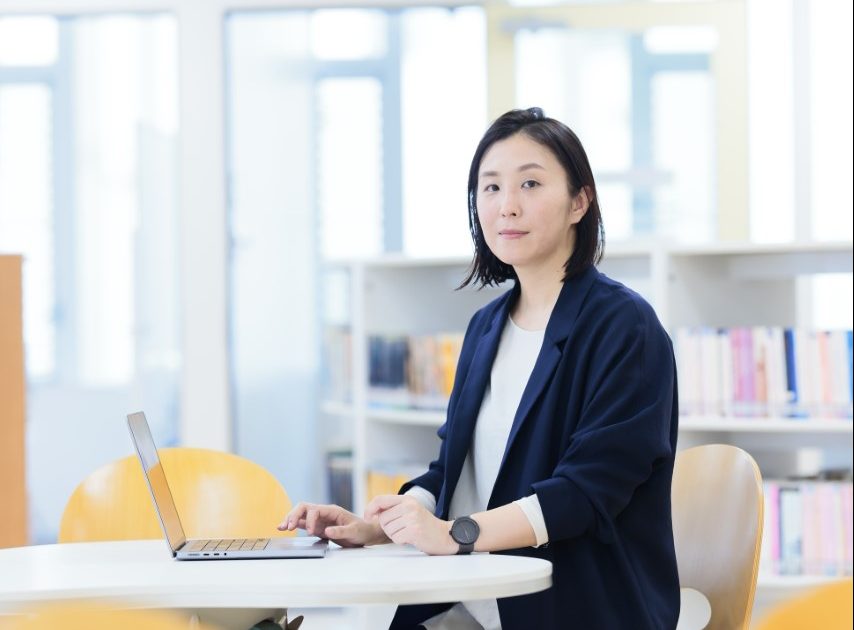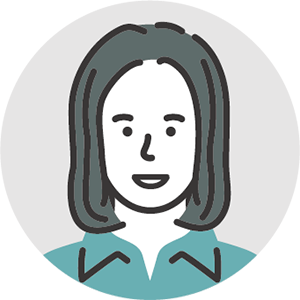
現在取り組まれている研究について教えてください。What research are you currently working on?
都市・建築デザインを専門分野としています。都市・建築における空間の形態が、技術・機能面等の外在的な要因によってのみ決定されているのではなく、デザイン上の概念や文化的、社会的背景などから仮説づけられる内在的な要因がどのように影響しているのかという視点から、建築空間や都市空間の研究を行なっています。
I specialize in urban and architectural design. I’m doing research on architectural and urban space from the perspective of how the form of space in cities and architecture is not only determined by external factors such as functional and technical conditions. It’s also influenced by internal factors that manage the syntax of historical, cultural, and social backgrounds.
外在的な要因と内在的な要因の2つの側面から探究しているということですが、具体的な対象はどのようなものになりますか?
So, you’re exploring the two aspects of extrinsic and intrinsic factors, but what exactly are you working on?
研究の対象は、シンガポールの緑化空間やオランダの福祉施設等の成り立ちといった都市デザイン研究から、近年注目されているドローンやVR(Virtual Reality/仮想現実)などの先進技術を空間設計プロセスに活用する研究まで多岐にわたります。
共通することは、「人工」と「自然」、「私」と「公」、「実空間」と「仮想空間」といった二項対立的な要素を融合する空間の可能性を探求しデザイン手法に応用しようとしている点です。
I have a wide range of research interests. I’m involved in urban design research on topics such as green spaces in Singapore and the organization of welfare facilities in the Netherlands. Advanced technologies such as drones and virtual reality have been the focus of much attention in recent years, and I’m also interested in their application to the spatial design process.
The common thread is attempting to explore and apply design techniques to the possibilities of spaces that fuse opposed elements such as artificial versus natural, private versus public, and real space versus virtual space.
幅広く研究をなさっているのですね。「人工」と「自然」など一見すると矛盾や対立をしているようなものを、デザイン手法によって融合させていこうという点が多岐にわたる研究の方向性として共通しているとうかがい、先生の目指すところが少し見えたように思います。
I see that you’re involved in an extensive range of research. I think I have a glimpse of what you are aiming for. The common direction of your wide-ranging research is to fuse seemingly contradictory and opposing elements, such as “artificial” and “natural,” through design methods.
ジェンダード・イノベーション研究においても、決して一元化できないジェンダーの課題を、建築や都市という連続的な空間の中で考えようとする点で、これまで取り組んだ研究の視点との共通点を感じています。
現代社会を取り巻く環境は、技術や人工物によって合理化・高度化が進む一方で、ものごとが細分化・単純化されてしまう側面があることも否めません。私の研究では、「空間」を介して「ひとまとまりの場が持つ可能性」を見出すことを研究テーマの中心としていますが、言い換えると「複雑なものを単純化せずに、いかに複雑なまま扱うことができるか」という挑戦でもあります。
I feel that my research on gendered innovation has something in common with the perspectives of the research I’ve been working on so far, in that I try to think about gender issues in the related context of architecture and cities. Of course, these issues can never be unified under one paradigm.
While the environment of modern society is becoming more rationalized and sophisticated through technology and artifacts, it’s undeniable that there are also certain things that are becoming more fragmented and simplified. The central theme of my research is discovering the “possibilities of a single place” through “space.” In other words, it’s the challenge of “handling complex things without simplifying them, and seeing how complex they can be handled as they are.”
複雑な現象や課題をひとつにまとめてしまわずに、どうすれば複雑なものの要素一つひとつを、ありのままに捉えられるかという考え方は、ジェンダード・イノベーション研究を進めるにあたり重要な視点だと思います。
I believe that the idea of how to capture each and every element of complexity as it is, without lumping complex phenomena and issues together, is an important perspective in the advancement of gender innovation research.
ジェンダード・イノベーションの視点での具体的な研究内容について教えてください。Please tell us about your specific research from the perspective of gendered innovation.
現在は、ジェンダード・イノベーション研究所で、「インクルーシブなトイレ環境の形成に関する研究」を進めています。従来のトイレ空間においてユーザの慣れによって潜在化した課題を、性差分析を取り入れることで多様な立場のユーザが抱える本音の中から明らかにし、全てのユーザが安心して選択・利用することができるトイレ空間のあり方を研究しています。
都市・建築空間を、これまでの社会では当たり前なこととして共有された普遍的な同一性からだけでなく、改めて性差視点で観察してみることで、差異性に基づく潜在的課題や新たなデザイン思考を発見し、インクルーシブな空間の可能性を開拓することが期待できます。
At the Institute for Gendered Innovations, I’m currently working on a Study on All-Gender Toilets to Create Inclusive Toilet Environments in Educational Facilities. By incorporating gender analysis into my research, I aim to clarify the true feelings of users in diverse positions to identify latent issues that users have become accustomed to in conventional restroom spaces. I’m studying how restroom spaces should be designed so that all users can feel safe while choosing and using them.
The perspective of universal identity has been shared as a matter of course in our society in observing urban and architectural spaces. By taking a gender perspective, we can expect to discover potential issues and new design thinking based on difference, and to develop the potential for inclusive spaces.
いろんな都市空間の中でも、トイレは特にジェンダーの配慮が必要不可欠な空間だと思います。どんな人でも安心して使用できるトイレ空間の創造に、ジェンダード・イノベーションの視点は有効ですね。具体的にどのようなデザイン展開を構想されているのですか?
Among all kinds of urban spaces, I think restrooms are a space where gender considerations are especially essential. The perspective of gender innovation is effective in creating restroom spaces that can be used by any person while feeling safe. What specific design developments do you have in mind?
2022年9月に開催されたジェンダード・イノベーション研究所の国際カンファレンスでは、従来のトイレ空間が示す「生物学的性差」でのアプローチではなく、社会的・文化的に構築される多義的な概念である「ジェンダー」による視点も考慮した公共トイレ空間の可能性を検証することで、すべての利用者が選択的にアクセス可能な空間が期待できるといった話をしました。「選択的にアクセス可能な」というのは、自分が選択するだけでなく、他者が選択することも尊重し理解するということであり、「場所の共有」とは何かということについて考えていきたいと思っています。
At the Institute for Gendered Innovations International Conference in September 2022, we discussed the possibility of public restroom spaces that take into account not the biological sex approach of conventional restroom spaces, but the gender perspective, which is a socially and culturally constructed, multidimensional concept. We talked about how we can expect to create spaces that are selectively accessible to all users. By “selectively accessible,” I mean respecting and understanding not only one’s own choices, but also those of others, and I would like to think about what “sharing a place” means.
国際カンファレンスではご講演いただきありがとうございました。藤山先生のご講演を拝聴してから、公共トイレのニュースが目に留まるようになりました。最近では、トイレに関する課題が様々に議論されるようになり、人々の関心を集める研究ですね。(国際カンファレンスの報告はこちら)
I’d like to take this opportunity to thank you for speaking at the International Conference. After attending your lecture, Dr. Fujiyama, I started following news about public restrooms more closely. This research topic has recently attracted people’s attention as they debate various issues related to toilets.
研究を進める中で、トイレ空間における本音や課題の個別性が果てしなくあることに改めて驚くと共に、ジェンダーに限らない交差性(インターセクショナリティ)の視点が不可欠であると痛感しています。トイレ空間における「場所の共有」と言っても、あるユーザの課題解決が、他のあるユーザの課題となってしまうこともあり、一次元的には言語化、定式化できない難しい対象です。だからこそ、理論的に議論するだけではなく、現実に起きている事象ひとつひとつを知ることが重要だと思っています。
In the course of my research, I’ve been re-awakened to the endless individuality of people’s real feelings and of issues in the restroom space. I’m keenly aware that an intersectional perspective, which is not limited to gender, is essential. The “sharing of place” in the restroom space is a difficult subject that cannot be verbalized or formulated in a one-dimensional way, since the solution to one user’s problem may become another user’s problem. That’s why I believe it is important not only to discuss these issues theoretically, but also to understand each and every event that is happening in reality.
これまでにない新しい発想でデザインされたインクルーシブなトイレ空間を街中で利用できる日がくることを楽しみにしております。
We look forward to the day when inclusive restroom spaces designed with new and unprecedented ideas will be available all over the city.

共同で研究をおこなっている学生達と都内の公衆トイレを調査・見学している様子Students conducting joint research surveying and visiting public restrooms in Tokyo
研究に取り組むことの面白さはどこにありますか?What do you find interesting about your research work?
都市・建築における「空間」という概念は、人の歴史とともに発生した、初源的な存在ですが、一方で新しい社会課題や最新の技術が日々更新され続ける対象でもあります。「空間」は、人々のアクティビティを活性化したり、情報を直感的に伝えたり、人々の五感を統合したりと、様々な力を持っています。日々更新されていく社会の新しいトピックや課題と共に「空間」という存在の価値を見つめ続けることで、より活性化されるテーマはないかという視点から研究することは、常に未来の生活環境に対する具体的な創造性を求められる点で、面白さを感じています。
The concept of “space” in cities and architecture is a primordial idea that has developed throughout human history, but it’s also a subject that’s constantly being updated with new social issues and the latest technologies. Spaces have the power to activate people, convey information intuitively, and integrate people’s senses. New topics and issues keep emerging as society is constantly changing. I find it interesting to conduct research on them from the viewpoint of whether there are themes that can be activated by continuing to look at the value of the existence of “space,” because this always demands specific forms of creativity toward future living environments.
単に、最新の都市・建築技術で新しくするのではなく、そこにある人や場所の歴史が息づく「空間」を意識することで、新しい発想がうまれてくるということでしょうか。このような、都市や建築の空間に関する研究はこれまでどのように発展してきたのですか?
I think that new ideas are born from an awareness of the people and history of a “space,” rather than simply renewing spaces with the latest urban and architectural technology. How has this kind of research on urban and architectural space developed so far?
都市・建築の歴史を見ると、近代化の過程で工業の発展を背景とした合理化により、多くの人に、より良い生活をもたらすという理想を掲げた革新的な都市・建築デザインが提案されました。一方で、このような合理に基づく視点は、画一化を生むジレンマも持っていました。事前に想定される目的や理想だけで計画される空間は、その想定されたストーリーの上では無駄がなく効果的な魅力を持ちますが、実際に空間を使う人々の多様性に立ちかえると、本来空間が持ちうる多義性というポテンシャルが失われている側面も考慮する必要があります。
私自身が捉えているジェンダード・イノベーションも、ある特定のジェンダーにまつわる課題を扱うだけではなく、都市・建築空間やあらゆる人々の生活が本来持ちえる包摂性を探求しようとするものなので、都市・建築の歴史の中で議論されてきた批評との共通性を認識することが重要になると思っています。
Looking at the history of cities and architecture, innovative urban and architectural designs were proposed with the ideal of improving the lives of many people through rationalization based on the development of industry in the process of modernization. On the other hand, this rational-based perspective also had the dilemma of creating uniformity. Spaces that are planned only for purposes and ideals envisioned in advance have an appeal that’s efficient and effective in terms of their pre-set story. But when we look at the diversity of the people who will actually use the space, we need to consider the potential of the versatility that the space originally has, which is lost in this kind of pre-arranged vision.
My own view of gendered innovation doesn’t only deal with specific gender issues. I also seek to explore the inherent inclusiveness of urban and architectural spaces and the lives of all people. This is why it’s important to recognize commonalities with the critiques that have been discussed throughout the history of urban and architectural practice.

令和4年度SSH指定女子高校等研究交流会における本研究課題をベースとしたワークショップの開催Workshop based on this research project at the 2022 Research Exchange Meeting of SSH-Designated High Schools for Girls
先生が研究者となったきっかけを教えてください。How did you become a researcher?
学部4年生から大学院時代に所属していた研究室で、「低地オランダにおける都市・建築デザインの研究」を行なったのが最初のきっかけです。オランダは、国土の約1/4が海抜ゼロメートル地帯といわれており、このポルダーとよばれる干拓地がベースとなった低地地域における都市・建築デザインの研究を行っていました。常に水の脅威と隣り合わせである非定常的な自然の不確実性を受け入れながら醸成された文化は、他国とは異なる都市・建築空間が生まれる稀有な土壌があります。
また、狭小な国土では都市に必要とされる機能を単純配置することができないため、オランダの都市・建築には、重層的にものごとを構築していこうとする発想があり、ユニークな建築作品や建築的思考が多くみられます。このように、ある人工環境が形成された文化的背景と、それらの特性が現代に至る都市・建築空間へどのように表層しているかという相関関係を探求する面白さに目覚めたのが、現在の研究のベースであり、研究者となったきっかけです。
I was motivated by doing the project Research on Urban and Architectural Design in the Low-Lying Netherlands. This was in the institute I belonged to from my fourth undergrad year through graduate school. The Netherlands has about 1/4 of its land area at sea level, and we were conducting research on urban and architectural design in reclaimed polderlands in these low-lying areas. This is a very distinctive culture that has developed always close to the threat of water, while accepting the vagaries of nature. It’s produced urban and architectural spaces that are different from those of other countries.
As well as that, the small size of the country means that the simple arrangement of functions needed in a city isn’t possible. So, Dutch cities and architecture have the idea of constructing things in a multilayered manner, and many unique architectural works can be seen in the Netherlands, and much original architectural thinking. This interest in exploring the correlation between the cultural context in which a particular man-made environment was formed and how these characteristics are expressed in urban and architectural spaces today is the basis of my current research and what led me to become a researcher.
地理的制限がある中で、人々が豊かな暮らしを求めてどのように土地を開発していったのかという過程が、建築作品などに表れてくるという点がとても興味深いです。学生時代に制約の向こう側に広がる世界を自ら創造する面白さに目覚めたということですが、藤山先生の難題を面白いとポジティブに取り組む姿勢は、大学での授業や高校生とのワークショップなどで、きっと次の世代にも伝わっていくと思います。
It’s fascinating to see how the process of people developing land in pursuit of an affluent lifestyle while faced with geographical restrictions is expressed in architecture and other works of art. As a student, Dr. Fujiyama, you were fascinated with the idea of freely exploring the world on your own terms. You have the gift of taking difficult problems as interesting ones, and I’m sure that your positive approach will be passed on to the next generation through your classes at the university and workshops with high school students.
日々、研究や授業でお忙しいと思いますが、休日の息抜き方法やおすすめのリフレッシュ方法などはありますか?I know that you’re busy with research and teaching every day, but how do you relax and refresh yourself on your days off?
「まちあるき」でしょうか(笑)。リフレッシュ方法というほどではありませんが、身近な場所や出掛けた先のまちを、目的地を定めずにぶらぶら歩くのが好きです。川筋跡を見つけたり、新旧問わず面白い建物を見つけたりと、一様ではない自然や人々の営みによる時間の積み重ねが空間化された風景の中に身を置くとリフレッシュできます。
I guess it’s strolling around town (laughs). It is not exactly a way to refresh myself, but I like to wander around places close to me or towns I go to, without setting a destination. It’s refreshing to find the trace of a river route, or to find interesting buildings, both old and new. I like to immerse myself in townscapes where the passage of time due to nature and people’s activities is spatially articulated in diverse ways.

まちあるきの様子Strolling around town
最後にジェンダード・イノベーション研究に興味を持った方、これから取り組もうとしている方へのメッセージをお願いします。Finally, do you have a message for those who are interested in gender innovation research or who are planning to engage in it?
ジェンダード・イノベーション研究とは、性差視点の考慮を起点として、既存の環境や生活を再検証することを通じ、従来の空間や生活にイノベーションをもたらそうとするクリエイティブな取り組みです。様々な分野の視点が集まって、領域を横断した議論を繰り返す中で、インクルーシブな社会に寄与するイノベーションの共通構造を発見できることを期待しています。
Gendered innovations research is a creative initiative that seeks to bring innovation to conventional spaces and lifestyles by re-examining existing environments and lifestyles, starting from the consideration of gender perspectives. We hope to discover a common structure of innovation that contributes to an inclusive society through repeated cross-disciplinary discussions, bringing together perspectives from a variety of fields.
文系/理系を超えた学際的な研究や、産官学連携のように、多領域で活動している人々が協働することで新たな価値のモノ・コトが創造される期待をも込められたメッセージをありがとうございました。藤山先生のご研究に興味をお持ちの方は、ぜひIGIウェブサイトをご覧ください。(藤山先生の研究紹介はこちら)
Thank you very much for your message, which includes the expectation that new things of value will be created through collaboration among people working in various fields. We hope to see interdisciplinary research that transcends the boundaries of humanities and sciences, and industry-government-academia partnerships. If you are interested in Dr. Fujiyama’s research, please visit the IGI website. (Click here for an introduction to Dr. Fujiyama’s research)


